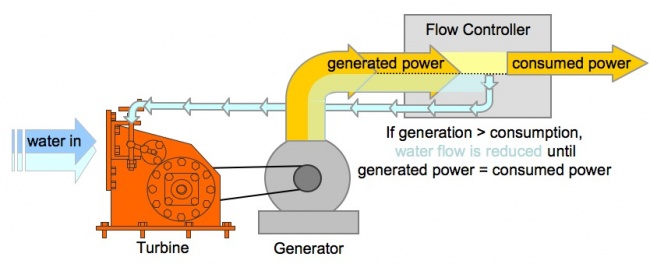Knowledge fuels change - Support energypedia!
For over 10 years, energypedia has been connecting energy experts around the world — helping them share knowledge, learn from each other, and accelerate the global energy transition.
Today, we ask for your support to keep this platform free and accessible to all.
Even a small contribution makes a big difference! If just 10–20% of our 60,000+ monthly visitors donated the equivalent of a cup of coffee — €5 — Energypedia would be fully funded for a whole year.
Is the knowledge you’ve gained through Energypedia this year worth €5 or more?
Your donation keeps the platform running, helps us create new knowledge products, and contributes directly to achieving SDG 7.
Thank you for your support, your donation, big or small, truly matters!
Difference between revisions of "Electrical-Mechanical Equipment"
***** (***** | *****) (Created page with '== Introduction == <u>disambiguation</u>:<br> grid connection<br> island / isolated grids<br> battery storage / charging stations == Controller: <br> == <!--{1276684879...') |
***** (***** | *****) |
||
| Line 15: | Line 15: | ||
<!--{12766848790530}--><!--{12766848790531}--> <!--{12766848790532}--> | <!--{12766848790530}--><!--{12766848790531}--> <!--{12766848790532}--> | ||
| − | <span style="display: none; | + | <span id="1274973221030S" style="display: none;"> </span> |
| − | + | <!--{12766848790533}--><!--{12766848790534}--><!--{12766848790535}--><span lang="DE" style="font-size: 11pt; font-family: Tahoma; color: black;">Function </span><span lang="DE" style="font-size: 11pt; font-family: Tahoma; color: black;">[[Image:Mhp-scheme.jpg|right|560x386px|Elements of a Micro Hydro Power Scheme]]principles</span><br> | |
| − | |||
| − | |||
Load- or Flow- controller ensure that the power output does not exceed the power demand (e.g. 230V, 50 Hz). <br> If flow of water in a MHP-station is constant the energy output of a turbine/generator is constant as well. Power demand is usually fluctuating over the time (e.g. day/night). If supply is higher than demand, excess energy must be diverted, dumped. alternatively the water flow can be reduced which results in less power output. <br> In case of more power demand than supply the controller cuts of the of demand line. <br> Load controller are placed between generator output and the consumer line.<!--{12766848790536}--> <span lang="DE" style="font-size: 11pt; font-family: Tahoma; color: black;"> | Load- or Flow- controller ensure that the power output does not exceed the power demand (e.g. 230V, 50 Hz). <br> If flow of water in a MHP-station is constant the energy output of a turbine/generator is constant as well. Power demand is usually fluctuating over the time (e.g. day/night). If supply is higher than demand, excess energy must be diverted, dumped. alternatively the water flow can be reduced which results in less power output. <br> In case of more power demand than supply the controller cuts of the of demand line. <br> Load controller are placed between generator output and the consumer line.<!--{12766848790536}--> <span lang="DE" style="font-size: 11pt; font-family: Tahoma; color: black;"> | ||
Revision as of 10:42, 16 June 2010
Introduction
disambiguation:
grid connection
island / isolated grids
battery storage / charging stations
Controller:
Function
principles
Load- or Flow- controller ensure that the power output does not exceed the power demand (e.g. 230V, 50 Hz).
If flow of water in a MHP-station is constant the energy output of a turbine/generator is constant as well. Power demand is usually fluctuating over the time (e.g. day/night). If supply is higher than demand, excess energy must be diverted, dumped. alternatively the water flow can be reduced which results in less power output.
In case of more power demand than supply the controller cuts of the of demand line.
Load controller are placed between generator output and the consumer line.
Controller Types
Load controller:
Electronic circuit, which keeps output power constant in Frequency- and Voltage- parameters.
Fluctuating energy demand requires a mechanism which either regulates the water input into the turbine (= flow control) or by diverting excess energy from the consumer connection (= ballast load).
Ballast load
usually electrical heaters in water or air. If energy demand is temporarily low the excess energy is converted into heat.
Flow control
regulates the amount of water into the turbine in order to match power output and power demand.
Nowadays flow control is done mostly via electronics (which steer a valve)






















